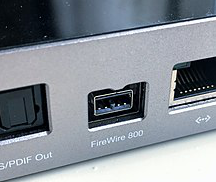Understanding Superfloppy and Its Role in Modern Computing
- Home
- Support
- Tips Data Backup
- Understanding Superfloppy and Its Role in Modern Computing
Summary
A superfloppy is a type of removable media that does not use traditional partitioning schemes like GPT or MBR. Instead, it treats the entire media as a single partition, with the first 512 bytes containing the Volume Boot Record (VBR). This format is essential for certain filesystems, such as FAT and NTFS, which rely on the VBR for important metadata. Superfloppies are significant in the realm of data storage, particularly for devices that need a straightforward, single-partition format.
- Volume Boot Record (VBR): The VBR is crucial as it holds important metadata for certain filesystems. For instance, filesystems like FAT and NTFS utilize the VBR to store their essential metadata.
- Bootstrap Code: Both MBR and VBR can contain bootstrap code, which is a small program that initiates the booting process. On non-bootable devices, this code may be trivial, protective, or even nonsensical. There is no clear pattern, making it difficult to determine definitively if a 512-byte sector is an MBR, VBR, or something else entirely.



Automatic 4K alignment Improves SSD performance during system migration.
Support GPT and MBR Automatically adapt to the suitable partition format.
Support NTFS and FAT32 Redeploy various files in different file systems.
Back up quickly Back up files at up to 3,000MB/min.
Overall backup schedule Support system redeployment/system backup/partition backup/disk backup/disk clone.
Automatic 4K alignment Improve SSD performance
Support GPT and MBR Intelligently adapt to a partition format
Support NTFS and FAT32 Redeploy files in different file systems
Free TrialFree TrialNow 2000 people have downloaded!Relate Links :
UEFI vs BIOS: What's the Difference?
11-07-2024
Amanda J. Brook : The article discusses the differences between BIOS (Basic Input/Output System) and UEFI (Unified Extensible Firmware Interface), which are...
Deep Dive: What is Incremental Backup?
01-07-2024
John Weaver : Incremental backup is a method that saves storage space and reduces bandwidth by only backing up data that...
Understanding and Monitoring Your SSD Health on Windows 11
26-06-2024
Jennifer Thatcher : This article highlights the integration of a new feature in Windows 11 that enables users to monitor the...
How to Clone HDD to SSD in Windows 10/11 Without Reinstalling
01-06-2024
John Weaver : Discover how to effortlessly clone your HDD to an SSD in Windows 10/11 without the hassle of reinstalling...




